 |
Respecting the Child's Perspective (CDA 3 & 4) |
2.00 |
Children and adults see the world very differently, and understanding child development helps you gain valuable insight through a child’s eyes. In this course, you will look at common situations and the ways children and adults may see them, taking into consideration what is developmentally appropriate for the children involved to find solutions that work for the children in care.
This course is also designed to be part of a Child Development Associate (CDA) Credential™ curriculum. It covers CDA Subject Area 3: Supporting Children's Social and Emotional Development, Subject Area 4: Strategies to Establish Productive Relationships with Families.
|
 |
Framing: Child Maltreatment for EMS Providers |
1.00 |
Child Abuse Pediatrician Dr. E. Murray discusses some of the key issues that EMS providers must consider when caring for abused children. Final Exam: This multiple-choice exam is designed to test your knowledge of the material you just reviewed. You have two attempts to gain an 70% or higher on this exam. Please take your time and answer each question carefully. |
 |
Adapting to Change |
0.50 |
Change is always happening, whether we realize it or not. Our bodies are constantly generating new cells to replace old ones. Stock prices are rising and falling. In this course, you will discover different strategies for reacting to and dealing with change in life. |
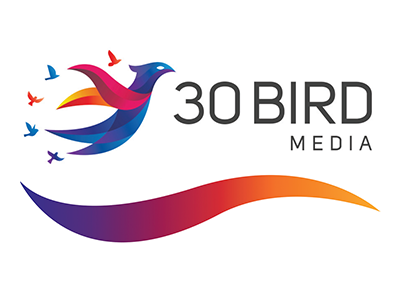 |
CWNP Certified Wireless Specialist - Exam CWS-101 |
8.00 |
Certified Wireless Specialist - Exam CWS-101 covers the fundamentals Wireless Fidelity (Wi-Fi) technologies for wireless communications. The student will learn the basics of how Radio Frequencies (RF) are utilized by Wi-Fi with hardware and software to create wireless local area networks (WLANs). Upon completion of this course, the student will have the knowledge required for the CWS-101 exam and CWS certification.
This vendor neutral course assumes that the student has a basic knowledge of using wireless computing devices and wireless networks. The exam objectives are marked throughout the course, with applicable acronym and objective indexes. |
 |
Exploring Developmental Needs and Characteristics: Age Group 8 to 10 for Paraprofessionals |
1.00 |
Certain developmental needs and traits are associated with younger school-age children, while others are typical of older school-age children. While the differences between school-age children of different ages are not clear-cut, there are some general traits and tasks that are often associated with younger school-age children. This course delves into the specific traits of students between the ages of 8 and 10. |
 |
Exploring Developmental Needs and Characteristics: Age Group 5 to 7 for Paraprofessionals |
1.00 |
Certain developmental needs and traits are associated with younger school-age children, while others are typical of older school-age children. While the differences between school-age children of different ages are not clear-cut, there are some general traits and tasks that are often associated with younger school-age children. This course delves into the specific traits of students between the ages of 5 and 7. |
 |
Exploring Developmental Needs and Characteristics: Age Group 11 to 12 for Paraprofessionals |
1.00 |
Certain developmental needs and traits are associated with younger school-age children, while others are typical of older school-age children. While the differences between school-age children of different ages are not clear-cut, there are some general traits and tasks that are often associated with younger school-age children. This course delves into the specific traits of students ages 11 and 12. |
 |
Exploring Developmental Needs and Characteristics: Age Group 13 to 17 for Paraprofessionals |
1.50 |
Certain developmental needs and traits are associated with younger school-age children, while others are typical of older school-age children. While the differences between school-age children of different ages are not clear-cut, there are some general traits and tasks that are often associated with older school-age children. This course delves into the specific traits of students between the ages of 13 and 17. |
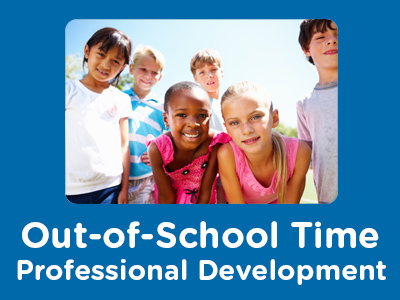 |
Exploring Developmental Needs and Characteristics: Age Group 8 to 10 |
0.67 |
Certain developmental needs and traits are associated with younger school-age children, while others are typical of older school-age children and youth. While the differences between school-age children of different ages are not clear-cut, there are some general traits and tasks that are often associated with younger (ages 5-7), middle (ages 8-10), and older (ages 11-12) school-age children and youth. In this course, we will explore the needs and characters of children ages 8 to 10, to help staff plan appropriate activities and guidance strategies. |
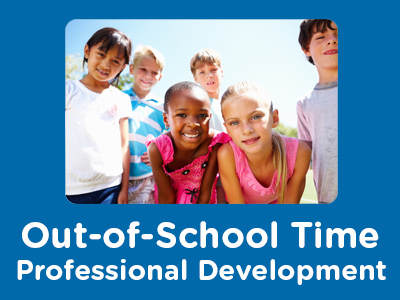 |
Exploring Developmental Needs and Characteristics: Age Group 5 to 7 |
0.67 |
Certain developmental needs and traits are associated with younger school-age children, while others are typical of older school-age children and youth. While the differences between school-age children of different ages are not clear-cut, there are some general traits and tasks that are often associated with younger (ages 5-7), middle (ages 8-10), and older (ages 11-12) school-age children and youth. In this course, we will explore the needs and characters of children ages 5 to 7, to help staff plan appropriate activities and guidance strategies. |
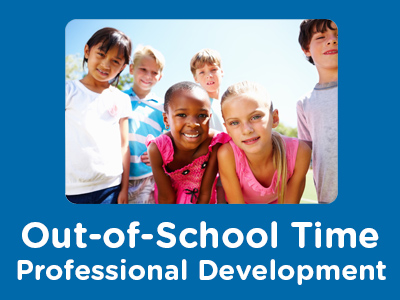 |
Exploring Developmental Needs and Characteristics: Age Group 11 to 12 |
0.67 |
Certain developmental needs and traits are associated with younger school-age children, while others are typical of older school-age children and youth. While the differences between school-age children of different ages are not clear-cut, there are some general traits and tasks that are often associated with younger (ages 5-7), middle (ages 8-10), and older (ages 11-12) school-age children and youth. In this course, we will explore the needs and characters of children ages 11 to 12, to help staff plan appropriate activities and guidance strategies. |
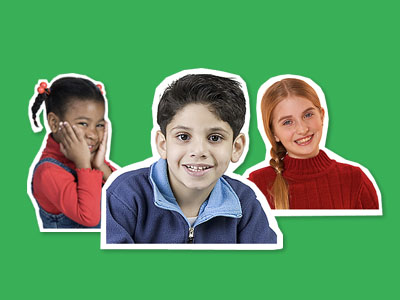 |
Course 03: Exploring Developmental Needs and Characteristics of Different Age Groups |
2.00 |
Certain developmental needs and traits are associated with younger school-age children, while others are typical of older school-age children and youth. While the differences between school-age children of different ages are not clear-cut, there are some general traits and tasks that are often associated with younger (ages 5 – 7), middle (ages 8 – 10), and older (ages 11 – 12) school-age children and youth. Understanding these differences helps staff plan appropriate activities and guidance strategies for children of different ages. |
 |
Exploring Developmental Needs and Characteristics (Collection) |
2.00 |
Certain developmental needs and traits are associated with younger school-age children, while others are typical of older school-age children and youth. While the differences between school-age children of different ages are not clear-cut, there are some general traits and tasks that are often associated with younger (ages 5 – 7), middle (ages 8 – 10), and older (ages 11 – 12) school-age children and youth. Understanding these differences helps staff plan appropriate activities and guidance strategies for children of different ages. |
 |
Exploring Developmental Needs and Characteristics of Different Age Groups |
2.00 |
Certain developmental needs and traits are associated with younger school-age children, while others are typical of older school-age children and youth. While the differences between school-age children of different ages are not clear-cut, there are some general traits and tasks that are often associated with younger (ages 5 – 7), middle (ages 8 – 10), and older (ages 11 – 12) school-age children and youth. Understanding these differences helps staff plan appropriate activities and guidance strategies for children of different ages. |
 |
Growing as a Professional in School-Age Programs |
2.00 |
Caring for school-age children in a school-age program is a relatively new field of work. The field itself is constantly changing and expanding. In view of this "newness" and change, those who work in the field are playing an important role in shaping and defining what it means to be a school-age professional. They are guiding school-age care as an emerging profession. In the search for a definition of professionalism in school-age programs, it is helpful to examine the common characteristics of professionalism in other fields. The next step is identifying qualities and characteristics associated with professional behavior in the school-age field, itself. As a school-age professional, it is also important to understand the importance of acting as a public policy advocate on behalf of school-age children and their families. An important part of professionalism is continued personal growth and development in relation to the field. This requires using appropriate resources and strategies to further individual professional development. It also requires considering what constitutes ethical conduct in the field and developing an ongoing commitment to ethical behavior. |
 |
Course 12: Growing as a Professional in School-Age Programs |
2.00 |
Caring for school-age children in a school-age program is a relatively new field of work. The field itself is constantly changing and expanding. In view of this "newness" and change, those who work in the field are playing an important role in shaping and defining what it means to be a school-age professional. They are guiding school-age care as an emerging profession.
In the search for a definition of professionalism in school-age programs, it is helpful to examine the common characteristics of professionalism in other fields. The next step is identifying qualities and characteristics associated with professional behavior in the school-age field, itself. As a school-age professional, it is also important to understand the importance of acting as a public policy advocate on behalf of school-age children and their families.
An important part of professionalism is continued personal growth and development in relation to the field. This requires using appropriate resources and strategies to further individual professional development. It also requires considering what constitutes ethical conduct in the field and developing an ongoing commitment to ethical behavior. |
 |
Growing as a Professional in School-Age Programs (Collection) |
2.00 |
Caring for school-age children in a school-age program is a relatively new field of work. The field itself is constantly changing and expanding. In view of this "newness" and change, those who work in the field are playing an important role in shaping and defining what it means to be a school-age professional. They are guiding school-age care as an emerging profession.
In the search for a definition of professionalism in school-age programs, it is helpful to examine the common characteristics of professionalism in other fields. The next step is identifying qualities and characteristics associated with professional behavior in the school-age field, itself. As a school-age professional, it is also important to understand the importance of acting as a public policy advocate on behalf of school-age children and their families.
An important part of professionalism is continued personal growth and development in relation to the field. This requires using appropriate resources and strategies to further individual professional development. It also requires considering what constitutes ethical conduct in the field and developing an ongoing commitment to ethical behavior. |
 |
Individualized Care and Routines (CDA 4 & 5) |
2.00 |
Caregiving routines provide us with opportunities to build close, personal relationships with each of the children we care for. When carried out responsively and without haste, these routines also create learning opportunities. To support a child's need for consistency and predictability, the routines we carry out should reflect families' caregiving practices at home.This course is designed to be part of a Child Development Associate (CDA) Credential™ curriculum. It covers CDA Subject area 4: Strategies to establish productive relationships with families, as well as area 5: Strategies to Manage Effective Program Operation.
This course can also be taken as a stand-alone learning event or as part of a broader early childhood education curriculum.
|
 |
Cardiac Arrest Management of the Firefighter Down |
1.00 |
Career Firefighter Jackeline Vazquez, BSCJ and Medical Director Jeremy Cushman, MD, MS, EMT-P, FACEP, FAEMS discuss the care and management of a cardiac arrest when the victim is a firefighter who is wearing full turnout gear. With the help of the Henrietta Fire District (New York State), this presentation offers many thought-provoking ideas that will assist your department.
Final Exam: Please read each question carefully. You will have two attempts to gain a 70% or higher on this exam. If you are not successful in two attempts, you are welcome to take the course again to gain the certification. |
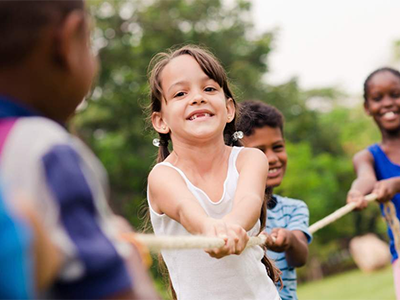 |
Creating a Quality Summer Program |
2.00 |
CalSAC partnered with the Summer Matters campaign to create our Quality Summer Program training series. Summer months bring unique opportunities for learning outside the traditional school year and walls. High quality summer learning programs change students’ lives for the better with an opportunity to improve their academic achievement and readiness to learn. Developing quality programs requires intentional, ongoing development. Engage in activities that will help identify and strengthen the quality of your summer learning program.
Creating a Quality Summer Program is the first module in the Quality Summer Programming Training series. In this module, participants will learn about the importance of high quality summer learning programs for youth, elements of high-quality summer programs and effective tools to guide programs in their ongoing development of quality programming. |
 |
Engaging the Community in Quality Summer Programs |
2.00 |
CalSAC partnered with the Summer Matters campaign to create our Quality Summer Program training series. Summer months bring unique opportunities for learning outside the traditional school year and walls. High quality summer learning programs change students’ lives for the better with an opportunity to improve their academic achievement and readiness to learn. Developing quality programs requires intentional, ongoing development. Engage in activities that will help identify and strengthen the quality of your summer learning program.
Engaging the Community in Quality Summer Programs is the third module in the Quality Summer Programming Training series. People need to know how important summer is to the children and youth in your program and across the state. Summer learning program staff are all torchbearers for quality summer opportunities. In this module, participants will gain a deeper understanding of elements of high-quality summer programs by identifying resources to help strengthen their summer program offerings, engaging in collaborative reflection and planning, and developing clear goals for the summer program. |
 |
Utilizing the Quick CASP Assessment Tool |
2.00 |
CalSAC partnered with the Summer Matters campaign to create our Quality Summer Program training series. Summer months bring unique opportunities for learning outside the traditional school year and walls. High quality summer learning programs change students’ lives for the better with an opportunity to improve their academic achievement and readiness to learn. Developing quality programs requires intentional, ongoing development. Engage in activities that will help identify and strengthen the quality of your summer learning program.
Utilizing the Quick CASP Assessment Tool is the second module in the Quality Summer Programming Training series. Creating a high quality summer learning program first starts with assessing the program at every level from the planning stages to the implementation of the program. In this module, participants will understand the language used in the Quick CASP Assessment Tool to describe quality summer programming and learn about the Quick CASP Assessment Tool to guide program quality improvement. |
 |
Become an Energenius® |
2.00 |
CalSAC has partnered with the Pacific Gas & Electric Company (PG&E) to bring the Energenius® Out-of-School Time Program to our online training platform. This FREE environmental stewardship curriculum is designed to engage children and youth to think about how they use energy, how energy is measured, paid for, and ways to save energy. Children and youth will understand how they can help reduce the impacts of energy use and production on the environment, and also practice influencing others to take energy-saving actions. Additionally, the curriculum is uniquely and intentionally designed to engage families in energy and water conservation habits.
Become an Energenius® is Activity Guide #4 in the 4-part Energenius® Out-of-School Time Program. The curriculum and activities are designed to engage children and youth to think about how they can save energy, how to recycle, reduce and reuse, and actions they will take to promote energy efficiency in their homes and community. This course will prepare participants to deliver the activities from the Become an Energenius® Activity Guide as well as sharing energy saving resources with families. |
 |
Energy and You! |
2.00 |
CalSAC has partnered with the Pacific Gas & Electric Company (PG&E) to bring the Energenius® Out-of-School Time Program to our online training platform. This FREE environmental stewardship curriculum is designed to engage children and youth to think about how they use energy, how energy is measured, paid for, and ways to save energy. Children and youth will understand how they can help reduce the impacts of energy use and production on the environment, and also practice influencing others to take energy-saving actions. Additionally, the curriculum is uniquely and intentionally designed to engage families in energy and water conservation habits.
Energy and You is Activity Guide #1 in the 4-part curriculum Energenius® Out-of-School Time Program. The curriculum and activities are designed to engage children and youth to think about how they use energy, how energy is measured and paid for, and ways to save energy. This course will prepare participants to deliver the activities from the Energy and You Activity Guide as well as connect families to resources to help save energy and money. |
 |
Water and Energy |
2.00 |
CalSAC has partnered with the Pacific Gas & Electric Company (PG&E) to bring the Energenius® Out-of-School Time Program to our online training platform. This FREE environmental stewardship curriculum is designed to engage children and youth to think about how they use energy, how energy is measured, paid for, and ways to save energy. Children and youth will understand how they can help reduce the impacts of energy use and production on the environment, and also practice influencing others to take energy-saving actions. Additionally, the curriculum is uniquely and intentionally designed to engage families in energy and water conservation habits.
Water and Energy is Activity Guide #3 in 4-part Energenius® Out-of-School Time Program. The curriculum and activities are designed to engage children and youth to think about water – where it comes from, how it’s used, and how to conserve this natural resource. This course will prepare participants to deliver the activities from the Water and Energy Activity Guide as well as help children and youth bring water saving resources home. |


























